Cover Story
Region’s recovery report card
Recovery at Asia-Pacific airlines still lags the rest of the world, but experts predict the region will catch up this year. Nevertheless, the report card on the state of the region’s commercial airlines contains plenty of challenges for carriers, reports associate editor and chief correspondent, Tom Ballantyne.
February 1st 2024
Taken at face value, the latest statistics for international operations of the region’s airlines chart a spectacular rise. Read More » In 2023, international passenger traffic they carried grew solidly, by 161%, with passenger numbers averaging 72% of pre-pandemic 2019, up significantly from 28% in 2022. “Overall, 2023 was a good year for the region’s carriers,” declared Association of Asia Pacific Airlines (AAPA) director general, Subhas Menon.
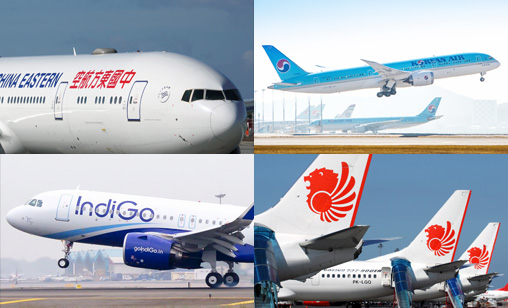 |
“Passenger demand grew unabated while air cargo markets ended the year on a high note. Gradual restoration of flight frequencies and city pair connections in the course of the year provided more options for travelers, stimulating demand,” he said.
“However, as operations were progressively restored, airlines faced capacity constraints in addition to increased cost pressures from volatile fuel prices, a strong US$ and inflationary impacts on operations.”
Despite these geopolitical concerns, this year promises to be another good one. Menon said. “International passenger traffic is poised to return to pre-pandemic numbers in the coming months, buoyed by returning tourism and resilient expansion in the region’s economies. Uncertainties remain, including potential erosion in business confidence and consumer sentiment,” he said. “Against this background, the region’s airlines remain vigilant to market influences while investing for future growth.”
Amid this bounty of positive news, concerning trends remain. Even with the spurt of growth, the region’s international air traffic was only 80.9% of the same period in 2019. In Europe, the recovery rate is at 100%. In North America, it has hit 110%. Additionally, in various parts of the Asia-Pacific, the recovery is erratic.
In the critical China market, international capacity is only 62.6% of 2019 numbers. Also, there has been a weaker rebound in Northeast Asia, now at 76% of pre-pandemic levels. On the other hand, India, led by a resurgent Air India, has surpassed 2019 traffic and is growing fast. It is just as vital as China to other regional operators.
Mainland airline recovery will be a crucial factor for Asia-Pacific airlines, a 2024 Outlook report by analyst CAPA forecasts. “The recovery of the China market will be particularly closely watched in 2024. Even though many travel restrictions in this market were lifted in early 2023, demand and traffic did not surge back as quickly as many airlines expected. This led some airlines to dial back capacity allocated to China routes in anticipation of greater gains,” it said. Pre-pandemic, China accounted for around 20% of Asia-Pacific’s passenger traffic.
 |
| 'We can pretty much stop talking about the recovery. The recovery is kind of over. We are looking ahead and we are looking forward. But with rising costs and pressure on airfare levels the meagre margins are likely to continue' |
| Subhas Menon AAPA director general |
The International Air Transport Association (IATA) is bullish on an Asia-Pacific recovery but cautions its projections are “highly dependent on the continued strong recovery in the China market”, with one downside risk being a poorer than expected China recovery, which will hurt demand, it said.
Credit rating agency, Morningstar DBRS, believes 2024 will build on recent momentum as international travel to the Mainland will likely benefit from the gradual restoration of the foreign airline capacity -because of flight capacity limitations - to serve international routes to China. “In addition, recent accommodative travel policies announced by China, such as the visa waiver that covers several countries in Europe and Malaysia that came into effect on December 1, 2023 and will expire on November 30 this year will likely boost demand for international travel,” it said.
For Asia-Pacific airlines, the main theme last year was recovery of international markets, which happened overwhelmingly fast in some cases, but slower than expected in others, CAPA said. “Completing the international recovery will be a major focus in 2024 for most Asia-Pacific airlines. However, there is a raft of other factors that will shape airline planning in the New Year,” it said.
“These include industry consolidation, the growing importance of LCC subsidiaries, major aircraft orders and fleet availability headaches. And as always there are the broader macroeconomic and geopolitical trends that represent risk for the airline industry.”
So, apart from some uncertainty about recovery in the Chinese market, what are the risks for airlines this year and beyond?
SUPPLY CHAIN ISSUES:
Airlines may be looking to ramp up capacity, but their efforts are being hampered by supply chain issues, including availability of spare parts. It is causing maintenance delays and impacting smooth and efficient fleet operations. Problems with engines - both the Pratt & Whitney Geared Turbofan (GTF) and the Rolls-Royce Trent – have plagued operators. Many Airbus A320neo family aircraft powered by the P&W GTF have to be grounded through 2024. Affected airlines in the region include Air New Zealand, All Nippon Airways, IndiGo, Cebu Pacific and Philippine Airlines. It results in fleet planning disruptions, the need to secure replacement capacity or even reduce flights. Supply chain constraints are expected to continue into 2025.
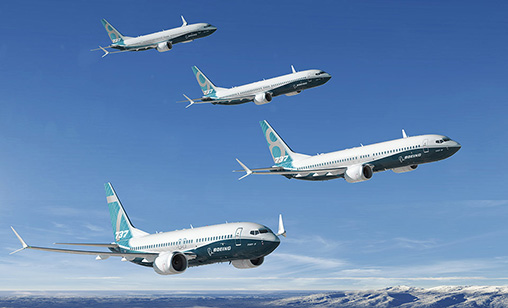 |
AIRCRAFT DELIVERIES:
Both big planemakers, Airbus and Boeing, have faced supply chain disruptions and production delays. As of late last year, they had massive backlogs of orders – a record 8,024 for Airbus and a near-record 5,783 for Boeing. Order a new plane today and you will have to wait till 2028 or 2029 for delivery unless you can secure the aircraft through a lessor.
There is another problem involving Boeing. Its reputation continues to take a beating, particularly after the recent Alaska Airlines mid-air incident when a door on a B737 MAX 9 blew out. As a result, the U.S. Federal Aviation Administration (FAA) grounded the type as did some other national air regulators. Eleven airlines fly the MAX 9, mostly in North and South America and Europe, with only Indonesia’s Lion Air operating the type in the Asia-Pacific.
While the MAX is being cleared to fly again after safety inspections Boeing will face more delays. The FAA has halted its planned production increase of the type. “This won’t be back to business as usual for Boeing,” FAA Administrator, Mike Whitaker, said. “We will not agree to any request from Boeing for an expansion in production or approve additional production lines for the 737 MAX until we are satisfied quality control issues uncovered during this process are resolved.”
And there is a wider issue for airlines operating any Boeing airplane. Travel agents are reporting some customers booking flights specifically are requesting to not fly on a Boeing jet. How long that will last is anyone’s guess, but public concerns about safety from months of bad publicity for Boeing is an unprecedented sentiment for an individual aircraft manufacturer and for airlines that operate its aircraft.
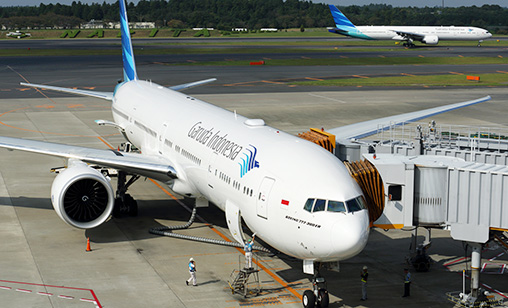 |
MACROECONOMIC AND GEOPOLITICAL IMPACTS:
All airlines face the uncertainty of ever swinging economic conditions, both domestic and international, that can have a dramatic impact on currency exchange rates. As a global business, all of these factors severely impact the bottom lines of airlines.
Then there is the uncertain world we live in. The never-ending Russia-Ukraine war and the Israel-Gaza conflict add complexity to flight operations, particularly for airlines in North Asia (apart from Chinese carriers) which operated direct flights to Europe using Russian airspace.
With access to Russian airspace remaining suspended airlines have to reroute their flights. As an example, this writer flew from Seoul South Korea to Frankfurt late last year with Korean Airlines. Unable to fly to directly to Germany over Russia, the flight rerouted over China, Kazakhstan, Turkey and Austria to Germany. It adds more than two hours to the one-way trip, meaning more fuel cost for the flight. There is no indication this situation will end anytime soon for Asian carriers.
 |
| 'Manufacturers continue to disappoint, not only from delays in the delivery of new aircraft, but in accessing spare parts for aircraft in service' |
| Willie Walsh IATA director general |
COSTS AND PROFIT MARGINS:
IATA forecasts airlines will make a $25.7 billion profit this year on the back of record revenue of $964 billion. But for Asia, it has forecast profits of just $1.1 billion. For many airlines, margins are wafer thin.
In December last year, at a global media briefing in Geneva, IATA’s Walsh said airlines will make, on average, $2.25 per passenger in 2024. So, the value retained by airlines for the average plane trip won’t even buy a subway ticket in New York City.
“There are some airlines doing well, but in the main, this industry is not recovering its cost of capital. It is struggling at a global level,” Walsh added. AAPA’s Menon said all costs – not just fuel – are spiking. “Inflation and other economic concerns will hit pockets. But travel demand is resilient,” he said.
DEMAND:
Many airlines, given their supply chain and aircraft delivery issues, have had obstacles to accurately matching capacity with demand as traffic surged through last year from the public’s post-pandemic stampede to travel again. This rising demand has pushed up airfares in Asia.
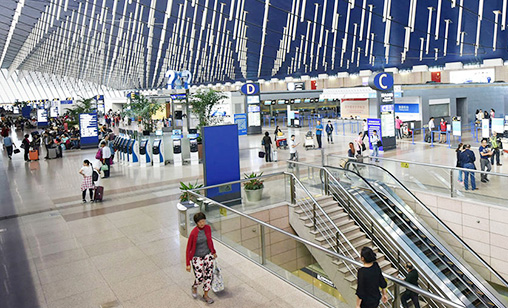 |
Last year economy class fares in the region rose around 21% and the cost of a business class seat was 17% above 2019 rates. If that trend continues, will demand continue rising, given cost of living pressures affecting people across the globe, even in Asia?
CAPA’s Outlook says that from a broader perspective, one of the big questions will be what happens to demand. “International demand has generally been strong in 2023, but some airlines report signs of demand easing. This could be a natural reaction after the surge of post-pandemic travel, as demand settles to its new normal. It could also be caused by a softening economic outlook and higher prices dictated by rising airline costs. If demand does ease, particularly as capacity increases, it would obviously affect airline profitability. Time will tell if 2023 represented peak profitability for airlines. With costs likely to remain elevated, airlines will have to be careful not to overextend themselves in 2024,” warns CAPA.
AIR CARGO:
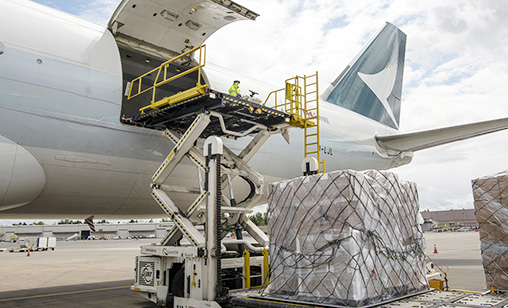 |
Following a prolonged period of subdued demand conditions, growth in air cargo markets is gaining momentum. The AAPA said air cargo markets entered 2023 weighed by multiple headwinds, including inflation, a strong U.S. dollar and government policy dampening trade activity as well as household spending power. Nevertheless, the final months of the year saw demand grow strongly, led by an increase in e-commerce shipments. In December, international air cargo demand as measured in freight tonne kilometres (FTK) recorded a 13.2% year-on-year growth, further reducing the decline recorded for full-year 2023 to 2.8%. “Whilst international air cargo demand declined by 2.8% for the full year, the last quarter of 2023 saw an 8.2% increase compared with the previous corresponding period,” said the AAPA’s Menon. Looking ahead he noted air cargo markets have picked up, but uncertainties remain, with new export orders still in decline.
AIRPORTS:
Airports too have not yet fully recovered. What happens in 2024 will largely depend on how airline growth progresses, and of course the trend in the China market. Singapore Changi Airport handled 58.9 million aircraft movements in 2023, 86% of the traffic recorded in 2019. The airport reported a strong 2023 fourth quarter when traffic reached 90% of full recovery – or 16.1 million passenger movements. Hong Kong International Airport (HKIA) said passenger throughput in December last year was more than double the 1.6 million passengers processed through the airport in December 2022. “All passenger segments experienced significant growth compared with the same month in 2022 with traffic to and from Southeast Asia, China and Taiwan recording the most significant increases,” Airport Authority Hong Kong (AAHK) said. “Passenger traffic at HKIA is forecast to recover to pre-pandemic levels by the end of 2024.” HKIA’s passengers for the reported month were 75.6% of the 5.7 million passengers who passed through the airport in December 2019.
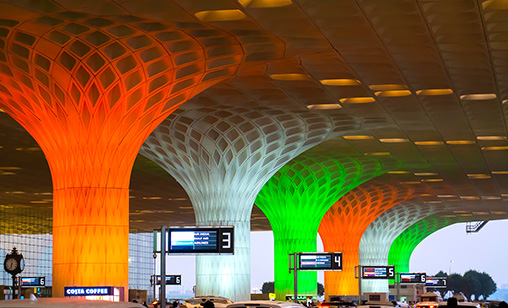 |
In contrast, reflecting activity in India, Mumbai’s Chhatrapati Shivaji Maharaj International Airport (CSMIA) handled 51.58 million passengers in 2023, the highest number in its history and a 110% recovery from pre-pandemic 2019. The result was 35% better than 2022 when the airport processed 38.33 million air travelers.
No-one doubts Asia Pacific airlines will ultimately regain their globe-leading position, operating from the world’s leading and fastest growing aviation market. It’s just that it will be business as usual, facing volatile economic conditions, a highly competitive market with endless challenges to overcome, probably including some that are totally unexpected.
REGULATORY RISK:
On the regulatory front, airlines could face rising costs of compliance and additional costs pertaining to passenger rights regimes, regional environment initiatives and accessibility requirements.
Sofia says:
July 16th 2024 10:03pm